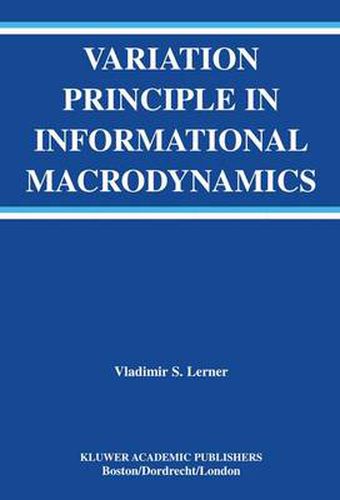Readings Newsletter
Become a Readings Member to make your shopping experience even easier.
Sign in or sign up for free!
You’re not far away from qualifying for FREE standard shipping within Australia
You’ve qualified for FREE standard shipping within Australia
The cart is loading…






This title is printed to order. This book may have been self-published. If so, we cannot guarantee the quality of the content. In the main most books will have gone through the editing process however some may not. We therefore suggest that you be aware of this before ordering this book. If in doubt check either the author or publisher’s details as we are unable to accept any returns unless they are faulty. Please contact us if you have any questions.
Information Macrodynamics (IMD) belong to an interdisciplinary science that represents a new theoretical and computer-based methodology for a system informational descriptionand improvement,including various activities in such areas as thinking, intelligent processes, communications, management, and other nonphysical subjects with their mutual interactions, informational superimposition, and theinformation transferredbetweeninteractions. The IMD is based on the implementation of a single concept by a unique mathematical principle and formalism, rather than on an artificial combination of many arbitrary, auxiliary concepts and/or postulates and different mathematical subjects, such as the game, automata, catastrophe, logical operations theories, etc. This concept is explored mathematically using classical mathematics as calculus of variation and the probability theory, which are potent enough, without needing to developnew,specifiedmathematical systemicmethods. The formal IMD model automatically includes the related results from other fields, such as linear, nonlinear, collective and chaotic dynamics, stability theory, theory of information, physical analogies of classical and quantum mechanics, irreversible thermodynamics, andkinetics. The main IMD goal is to reveal the information regularities, mathematically expressed by the considered variation principle (VP), as a mathematical tool to extractthe regularities and define the model, whichdescribes theregularities. The IMD regularities and mechanisms are the results of the analytical solutions and are not retained by logical argumentation, rational introduction, and a reasonable discussion. The IMD’s information computer modeling formalism includes a human being (as an observer, carrier and producer ofinformation), with a restoration of the model during the objectobservations.
$9.00 standard shipping within Australia
FREE standard shipping within Australia for orders over $100.00
Express & International shipping calculated at checkout
This title is printed to order. This book may have been self-published. If so, we cannot guarantee the quality of the content. In the main most books will have gone through the editing process however some may not. We therefore suggest that you be aware of this before ordering this book. If in doubt check either the author or publisher’s details as we are unable to accept any returns unless they are faulty. Please contact us if you have any questions.
Information Macrodynamics (IMD) belong to an interdisciplinary science that represents a new theoretical and computer-based methodology for a system informational descriptionand improvement,including various activities in such areas as thinking, intelligent processes, communications, management, and other nonphysical subjects with their mutual interactions, informational superimposition, and theinformation transferredbetweeninteractions. The IMD is based on the implementation of a single concept by a unique mathematical principle and formalism, rather than on an artificial combination of many arbitrary, auxiliary concepts and/or postulates and different mathematical subjects, such as the game, automata, catastrophe, logical operations theories, etc. This concept is explored mathematically using classical mathematics as calculus of variation and the probability theory, which are potent enough, without needing to developnew,specifiedmathematical systemicmethods. The formal IMD model automatically includes the related results from other fields, such as linear, nonlinear, collective and chaotic dynamics, stability theory, theory of information, physical analogies of classical and quantum mechanics, irreversible thermodynamics, andkinetics. The main IMD goal is to reveal the information regularities, mathematically expressed by the considered variation principle (VP), as a mathematical tool to extractthe regularities and define the model, whichdescribes theregularities. The IMD regularities and mechanisms are the results of the analytical solutions and are not retained by logical argumentation, rational introduction, and a reasonable discussion. The IMD’s information computer modeling formalism includes a human being (as an observer, carrier and producer ofinformation), with a restoration of the model during the objectobservations.